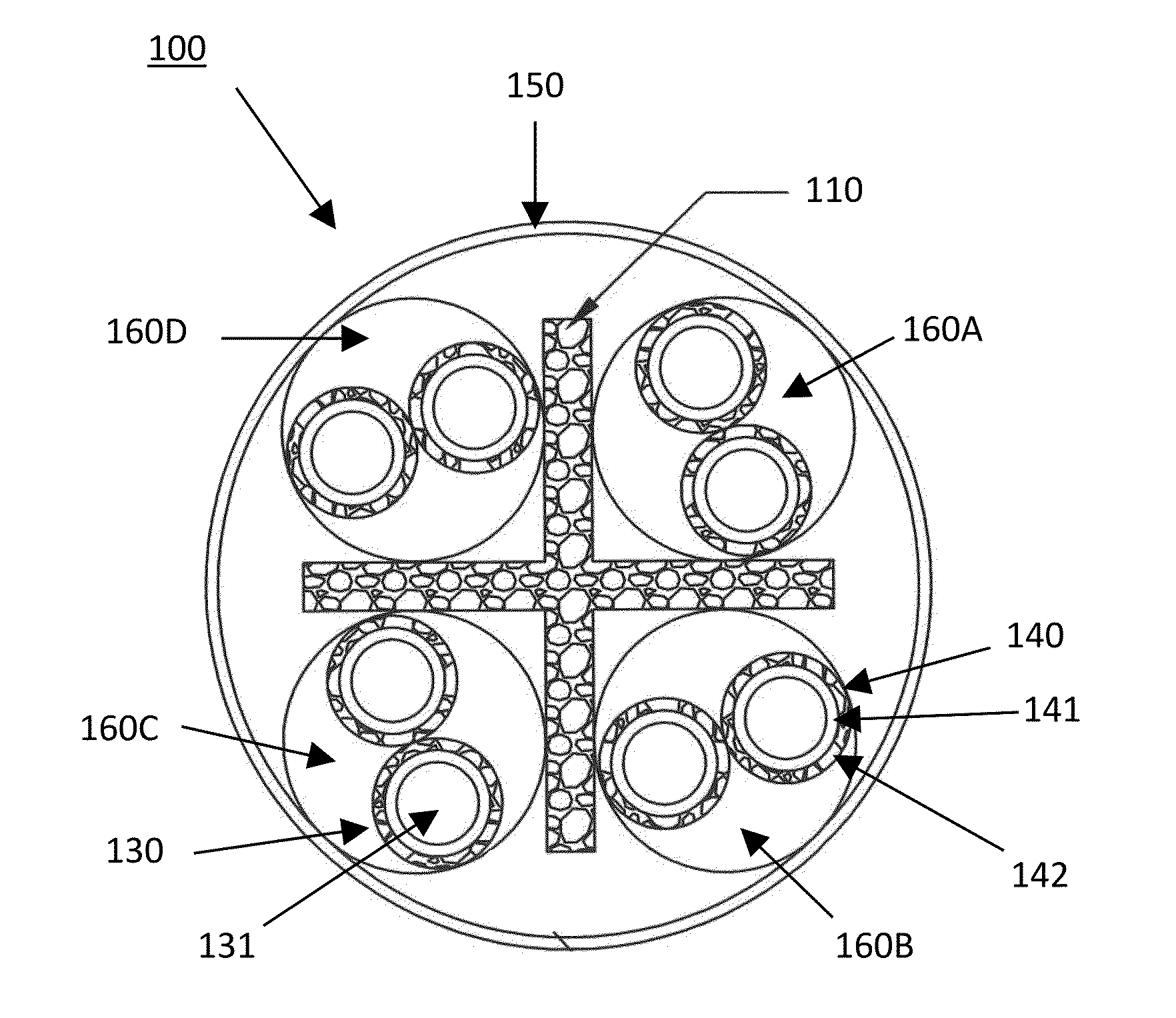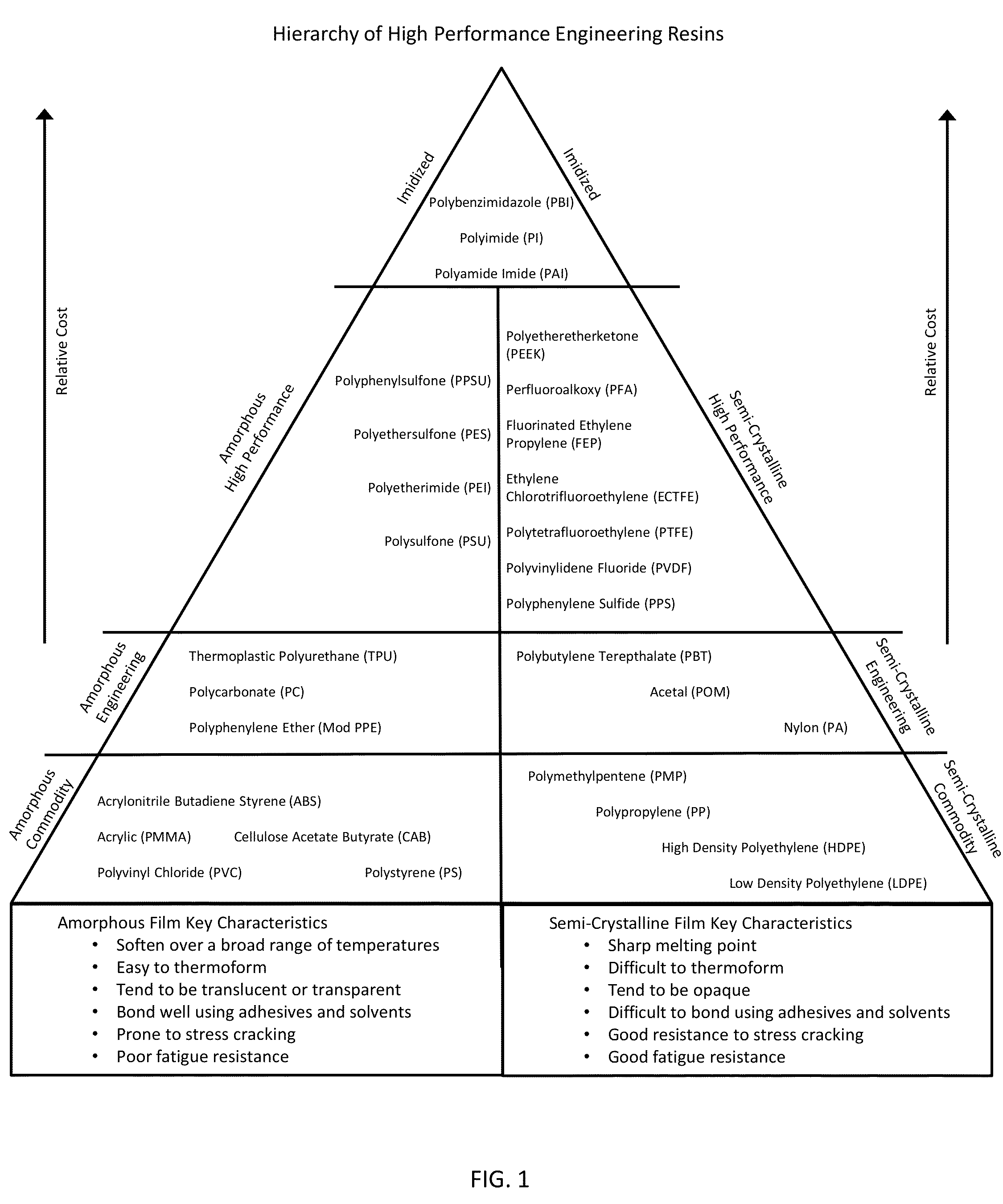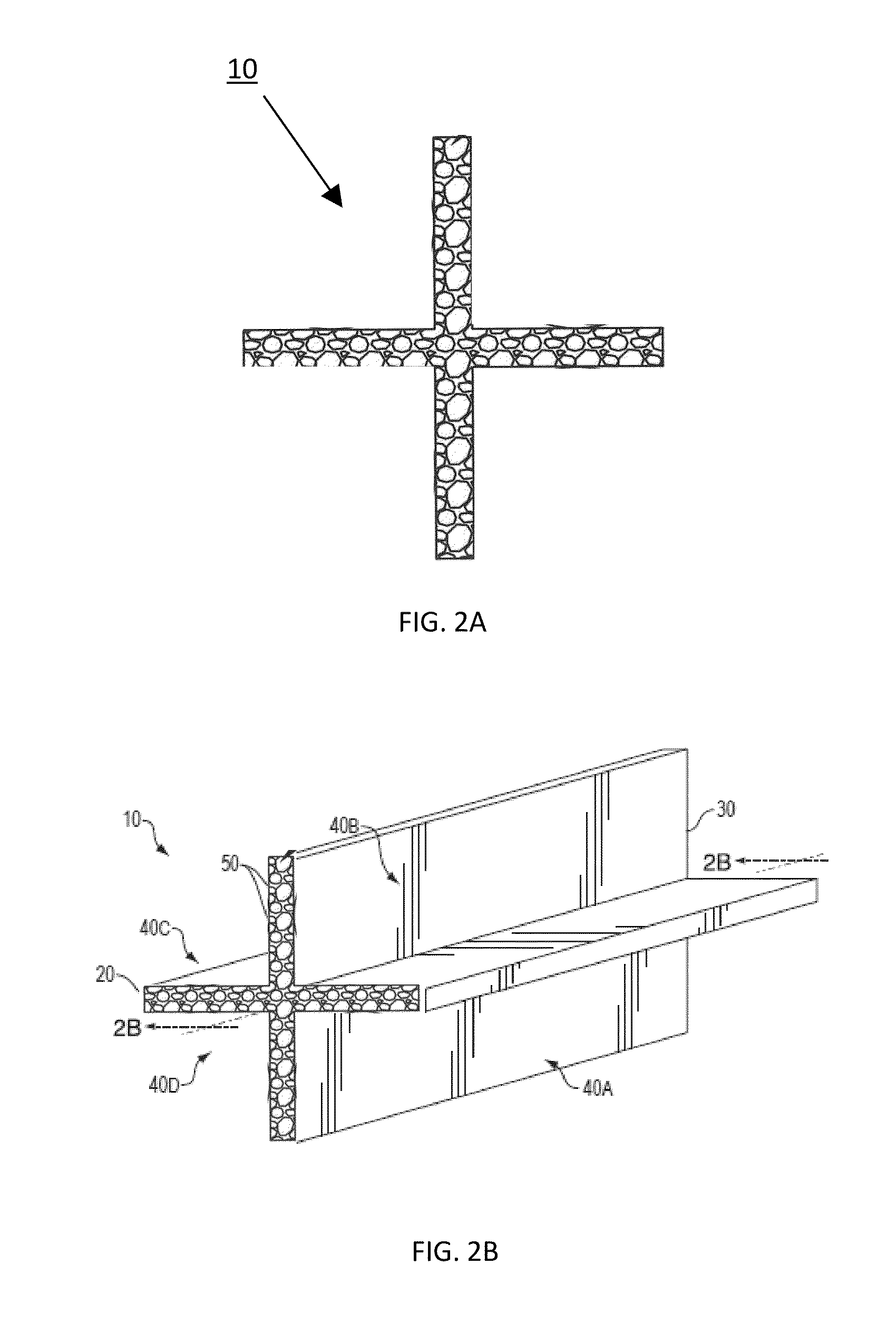Compositions for compounding, extrusion and melt processing of foamable and cellular halogen-free polymers
- Summary
- Abstract
- Description
- Claims
- Application Information
AI Technical Summary
Benefits of technology
Problems solved by technology
Method used
Image
Examples
example 1
PSU
[0311]Manufacture of a Pelletized Foamable Composition
[0312]PSU, in a weight ratio of Aclyn® wax or Genioplast Silicone or Dow Corning Si Powder Resin, halogen-free, powdered siloxane, Dow Corning 4-7105 or 4-7081 / talc / non-halogenated resin 0.25 / 7.5 / 92.25 was formed by sequential additions through a feeder section of a twin screw extruder. Temperature profile in the melt twin screw extruder was the following (from zone 1 to 11): 475° F., 550° F. (288° C.), 550° F. (288° C.), 550° F. (288° C.), 525° F. (274° C.), 480° F. (249° C.), 525° F. (274° C.), 500° F. (260° C.), 500° F. (260° C.), 500° F. (260° C.), 575° F. (302° C.). The extruder was equipped with a pelletizer to produce pellets to a shape that is preferable for extrusion processes.
example 2
PSU
[0313]Manufacture of a PSU, Wax, and Talc Derivative (Masterbatch Composition)
[0314]Aclyn® wax or Genioplast Silicone or Dow Corning Si Powder Resin, halogen-free, powdered siloxane, Dow Corning 4-7105 or 4-7081 commercially available from M. F. Cachat and a talc derivative of chemical composition Mg3Si4O10(OH) was melt compounded with a non-halogenated resin, namely PSU, in a weight ratio of Aclyn® wax or Genioplast Silicone or Dow Corning Si Powder Resin, halogen-free, powdered siloxane, Dow Corning 4-7105 or 4-7081 / talc / non-halogenated resin 0.25 / 15.0 / 84.75, in a twin screw extruder, with the following temperature profile: 475° F., 550° F. (288° C.), 550° F. (288° C.), 550° F. (288° C.), 525° F. (274° C.), 480° F. (249° C.), 525° F. (274° C.), 500° F. (260° C.), 500° F. (260° C.), 500° F. (260° C.), 575° F. (302° C.).
example 3
PSU
[0315]Manufacture of Foamed Articles from a Mixture of Pellets
[0316]Pellets obtained from example 1 or pellets obtained from example 2, blended with PEI at a weight ratio of 50 / 50, are then placed in the hopper of a 24 to 1 ratio high temperature extruder with heat zones 1 through 6 set at the following temperatures 500° F. (260° C.), 522° F. (272° C.), 600° F. (316° C.), 617° F. (325° C.), 644° F. (340° C.), and 565° F. (296° C.) to form one of several foamed articles including an extruded profile such as used for separators, wire insulation, or jackets for cabling.
[0317]Foamed articles were found to possess an outstanding cells structure, with tunable foaming level, and outstanding insulating properties as described in the following examples.
PUM
| Property | Measurement | Unit |
|---|---|---|
| Fraction | aaaaa | aaaaa |
| Fraction | aaaaa | aaaaa |
| Fraction | aaaaa | aaaaa |
Abstract
Description
Claims
Application Information
 Login to View More
Login to View More - R&D
- Intellectual Property
- Life Sciences
- Materials
- Tech Scout
- Unparalleled Data Quality
- Higher Quality Content
- 60% Fewer Hallucinations
Browse by: Latest US Patents, China's latest patents, Technical Efficacy Thesaurus, Application Domain, Technology Topic, Popular Technical Reports.
© 2025 PatSnap. All rights reserved.Legal|Privacy policy|Modern Slavery Act Transparency Statement|Sitemap|About US| Contact US: help@patsnap.com



